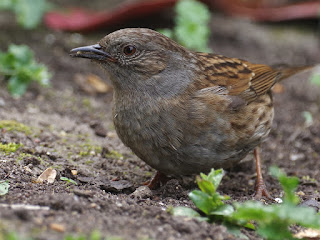Greylag Geese and Feral Pigeons were startled by yesterday's gun salute in Hyde Park. Thanks to Joan Chatterley for this picture.
She also saw a female Great Spotted Woodpecker looking for insects under the flaking bark of a plane tree by the Albert Memorial. I've seen woodpeckers here several times, including a male, so evidently there's a regular breeding pair.
Two more pictures from Joan: the Mute Swan in the Italian Garden taking a shower under a fountain ...
... and one of the stone nymphs not quite managing to drench the dominant male on the Long Water, who is not in the habit of taking showers.
The Italian Gardens swan, on the other hand, is very fond of getting wet, and a few days ago I photographed him under the spray from the marble fountain. which was being blown on to the pavement by a brisk south wind.
A final picture from Joan: a squirrel eating begonias in the Flower Walk.
I had already seen and photographed Wood Pigeons and Feral Pigeons ...
... eating these flowers, so I looked them up. It seems that begonias can be eaten by humans too, and are sometimes on the menu in the fancier kind of restaurants as a salad ingredient, misleadingly described as 'apple blossom'. They have a sour and slightly bitter citrus flavour. People with arthritis and gout should avoid them, as they contain a lot of oxalic acid.
When Wood Pigeons hang upside down to eat elderberries, the only way they can straighten up is by falling out of the tree and hastily taking flight to avoid crashing into the ground.
A young Grey Heron against the background of the red-leafed cherry tree on the island.
You usually see Pied Wagtails hunting insects on the ground, but this female was taking a break in a tree.
Today's featured bird is the Dunnock, a modest and unobtrusive little creature which many people pass their lives without seeing at all.
The most visible Dunnocks in the park are a family in the Rose Garden ...
and another at the Lido restaurant, which can sometimes be seen running around on the terrace ...
... and foraging in the planters.
The attraction of the restaurant is that spilt food attracts insects. Here a Dunnock and another insect-eating bird, a Grey Wagtail, forage on the edge of the lake under the restaurant terrace.
A Dunnock and a Wren, both after insects, perched on the same bramble on Buck Hill.
When you manage to get a shot of a food item that they have found, it's usually something tiny and often hard to know whether it's a larva or a seed, as you can see from these pictures.
They are said to take worms. I've never seen one do that, but they must encounter them while foraging widely in the undergrowth, on rotten tree trunks, or in flower beds.
The Dunnocks in the Rose Garden often lurk in the shadows under the benches, probably because crumbs from people eating their lunch there attract insects.
They have a beautiful song.
Here a Dunnock in the Rose Garden was answered by a Robin.
I've never seen a Dunnock's nest, but they certainly do nest in the shrubbery near the Lido restaurant, where I've seen them gathering nesting material ...
... and later carrying insects to nestlings.
This is the only picture I ever got of a young Dunnock, in the same place.
%202022%201a.jpg)
%202022%201a.jpg)
%202022%201a.jpg)
%202022%201a.jpg)

%202022%201a.jpg)

















Have been lucky enough to hear dunnocks singing a few times - very beautiful sound indeed 😀
ReplyDeleteThank you for the feature on Dunnocks. Very underestimated little birds but full of character
DeleteIt's quite easy to hear Dunnocks singing in the Rose Garden in spring. I once managed to get one of them to come out of the flower bed to pick up thrown pine nuts from the path.
DeleteFor me that is the song of winter - dunnocks are winter migrants here. I hope they will be arriving soon.
ReplyDeleteThe picture of the Nymph trying to dump a bucket of water on top of the Long Water dominant swan is hilarious. She looks aggravated, and he looks like he doesn't give a damn that she does.
Tinúviel
The structure at the back of the Italian Garden called Queen Anne's Alcove is structurally a nymphaeum -- see this post. There is a little house at the back of it which is inhabited, I hope by the nymphs themselves, who retire there for a hard-earned dinner after the park closes.
DeleteHow's the cabin fever?
ReplyDeleteThanks for asking. Went out for a bike ride this evening, which doesn't put much strain on the ankles. Will have to wait till tomorrow to see if it has had a deleterious effect. I really needed to get out.
DeleteCompletely understand.
Delete